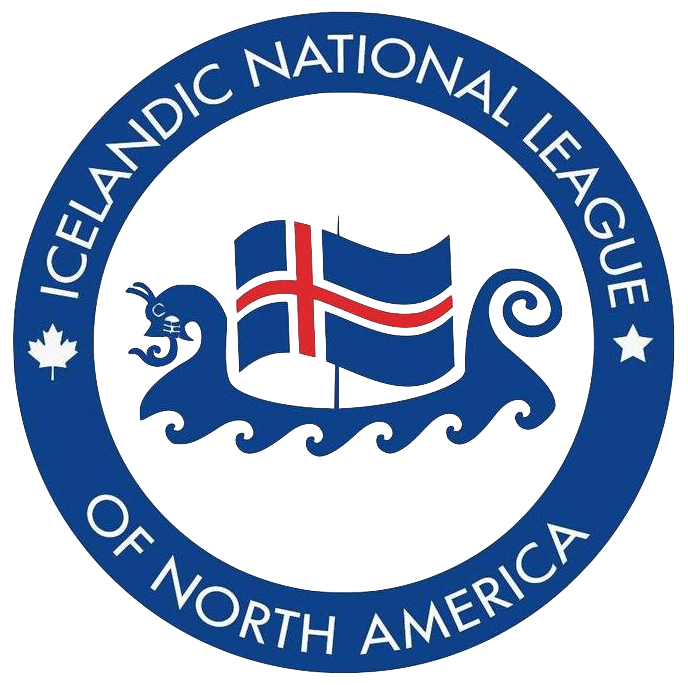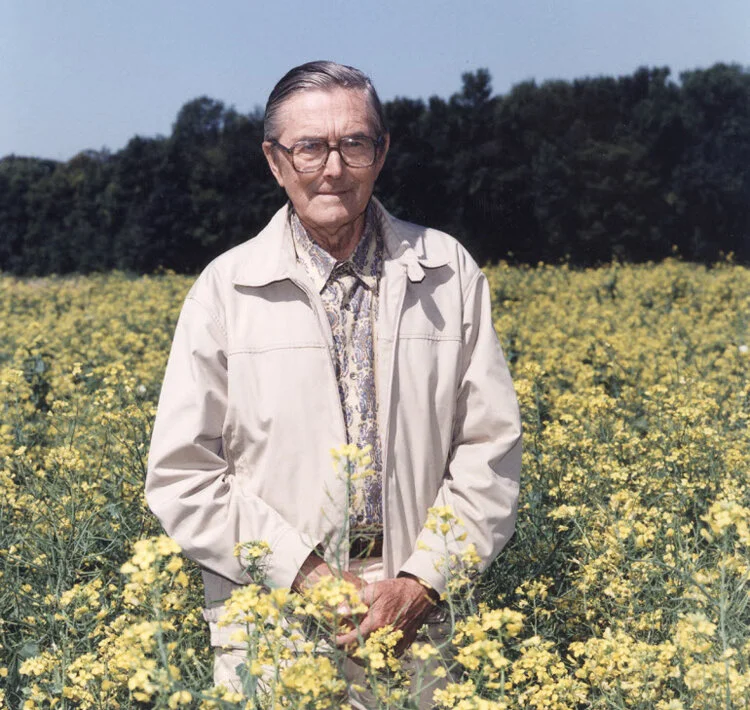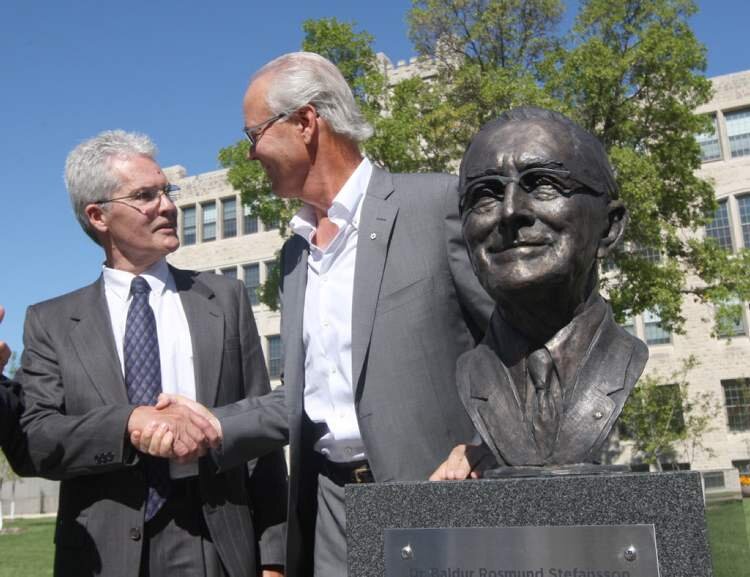Baldur Rosmund Stefansson B.S.A., M.Sc., Ph.D.(Man), F.A.I.C., O.C.
(1917 – 2002)
Professor, plant breeder, geneticist.
Lundar, Winnipeg, MB
Baldur R. Stefansson was born at Vestfold near Lundar, Manitoba to Gudmundur and Jonina Stefansson, immigrants from Iceland. He was one of ten children in the family. Baldur married Sigriður J.M. Westdal. They had three children – Björgvin, Helga, and Paul.
Like many of his contemporaries, his education was interrupted by the hard times of the 1930’s, and did not progress past Grade 9. In 1939, he joined the army. After the war, he was able to finish school with assistance from the army, completing grades 10, 11, and 12 in a single year. He then enrolled in the University of Manitoba’s faculty of Agriculture and received a Diploma in 1949, a BSA in 1950, Masters Degree in 1952, and PhD in 1966. He stayed at the University of Manitoba and enjoyed a long career there as a professor and plant researcher. He retired in 1986.
He has been referred to as ‘The Father of Canola’, as he was instrumental in the development of what is now the world’s foremost healthy edible oil.
Rapeseed had been a regular crop in the Canadian prairies for many years. It could be seeded late and still be ready for harvest before any early frost. Effective as an industrial oil, rapeseed demand had peaked during the war years. Baldur Stefansson began his research in the early 1950’s to create a variety of rapeseed oil as an edible product to replace the soybean oil and palm oil Canada was importing. It was important that the new plant yield a high quality edible oil and low levels of erucic acid and glucosinolates that would allow the rapeseed pulp to be used as animal feed.
By 1973, Baldur Stefansson registered the new plant called Tower, the first “double zero” variety, low in both erucic acid and glucosinolates. Other researchers soon followed with newer varieties. Canola (Canadian Oil) owes its origin to more than one researcher, but Baldur Stefansson was at the forefront of the research involved.
In 2013, the University of Manitoba set aside an area on campus, which will be called Innovation Plaza and will feature commemorative busts of individuals who made significant contributions to society. The inaugural inductee is Dr. Baldur R. Stefansson. At the opening the university President said: “Innovation Plaza provides us the opportunity to further celebrate world-class researchers whose ideas and hard work at the University of Manitoba have changed our lives.”
Dr. Stefansson received many honours and awards:
-Royal Bank Award in recognition of a contribution to humanity. 1975
-Fellow, Agricultural Institute of Canada. 1975
-Honorary Life Member, Canadian Seed Growers Association. 1976
-Queen’s Jubilee Medal. 1977
-Grindley Award - in recognition of a singular contribution to Canadian agriculture. 1978
-H.R. MacMillan Laureate in Agriculture. 1980
-Agronamy Merit Award. 1980
-Manitoba Institute of Agrologists Distinguished Agrologist Award. 1981
-Canadian Barley and Oilseeds Conference Award. 1982
-Honorary Life Member, Manitoba Institute of Agrologists. 1984
-Officer of The Order of Canada. 1985
-Professor Emeritus, University of Manitoba. 1985
-GCRIC International Award for Research in Rapeseed. 1987
-McAnsh Award. 1989
-Canada Iceland Foundation Scholarship honouring Dr. Baldur Stefansson.
1991
-Honorary Doctorate, University of Manitoba. 1997
-Wolfe Prize in Agriculture (Israel). 1998
-Order of the Buffalo Hunt. 1998
-Order of Manitoba. 2000
-Order of the Falcon (Iceland). 2000
-Honorary Doctorate, University of Iceland. 2000
-Canadian Agricultural Hall of Fame Inductee. 2002
G. Oddleifson
2014





